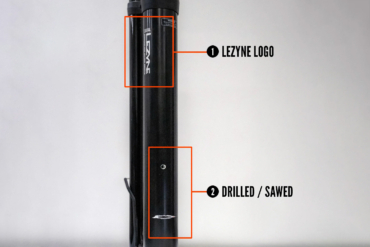A fresh look, updated specs, and an entirely different marketing approach went into REI’s Co-Op Cycles launch. The brand hopes the new identity will finally give it clout among cyclists.
Wind roars past my ears as I scream down a bumpy Texas road. I clench hard on the drops as I hug an increasingly tight turn, resisting the urge to squeeze the brakes. This is a test after all.
Cracked, worn asphalt gives way to a mix of hard-packed dirt and chunky gravel. For a few heart-pounding moments, the backend squirts and shimmies like it might give up on the new terrain.

I’m piloting one of the Co-Op Cycles stable of road bikes, one of 33 models REI will release between now and next spring. With models ranging from mountain to touring, road, city, and toddler rides, Co-Op Cycles replaces the house brand Novara REI owned for over 30 years.
I got an early peek at the ARD (all-road) 1.2 during some bike camping in Austin, Texas, to test how the new build performs and what Co-Op Cycles are all about.
In short: The ARD 1.2 is a solid intermediate road bike with enough all-terrain chops to make it a capable gravel rider. But it is simple enough that, at $1,300, beginners might consider it a worthwhile investment as a regular ride.
Co-Op Cycles: A Brief History
The new rides are part of REI’s attempt to bring its cycling products in line with Co-Op members’ needs and its own reputation for quality outdoor recreation gear. According to Steve Gluckman, director of product design and development at REI, historically, members who shopped at REI often made bicycle purchases elsewhere.
“People have been taking over our turf,” he told me, speaking of cycling-only brands winning REI members’ bike business. “So we took a look at what we were doing well, but more importantly, where we were falling short.”
After thorough research and opinion surveys of members and employees, Gluckman and the bike team set to work. They determined the Novara brand, known for its urban-forward design, was “missing the mark” when it came to peoples’ expectations of the REI brand.
So, the brand announced last year it’s revamping its focus. Out are commuter-friendly features like belt drive, dynamo hubs, and internal gearing. In their place are more adventure-ready, versatile bikes REI hopes will win casual and intermediate riders’ favor.
Co-Op Cycles: Tested In Texas
I was one of five journalists invited to ride REI’s “all-road” aluminum bicycle. The ARD line is a “ground-up new build” for REI, as is the DRT line of mountain bikes. That’s in contrast to the “city” (CTY) and “adventure” (ADV) lines, which are still spec’d from the most popular Novara frames. Those will receive new design and feature upgrades next spring, completing REI’s transition to Co-Op Cycles.

We took the ARDs out for 20+ miles across Austin’s two-lane highways and unpaved county roads. The terrain also brought occasional mud and creek overflow, tough ascents, and plummeting descents. So our test covered a range of conditions.
Review: Co-Op Cycles ARD 1.2
The ARD is a 19-lb. aluminum alloy frame (common 6061) with carbon fork, mechanical disc brakes, a Shimano 105 groupset, and 2×11 drivetrain.
It’s not remarkable to look at: a “greatly restrained” aesthetic of all-black with gender-neutral color accents on the fork and chainstays. Still, for $1,300, the Shimano 105 groupset, STI shifting, internal brake-cable routing, and clearance for up to 35c tires make it a stout ride.
The bike performed perfectly for what it is: a very capable ride that’s not built for high-end performance. Going down hills it proved surprisingly nimble; we topped out at 50 mph.
On gravel, it felt simultaneously “chunky” and squirrely. I’m not a fan of aluminum bikes, and this exemplified why. The hard-packed, untended backroads were merciless on my hands and saddle. And when the rocks became loose, the back end slipped and slid, adding a little extra adrenaline to the ride.
In short, it feels like a good bike, not a great one. And, in my opinion, that might be the best part. It seems like REI stopped short of up-selling its members on top-of-the-line components and technical features (though higher-priced models do cater to more advanced riders).
The result is a ride that is capable, versatile, but above all approachable. REI members who are looking for a fairly priced ride they can take on occasional mixed-terrain getaways now have a solid option at the Co-Op.
“We don’t want to win the Great Divide,” Gluckman summed up. “But if you want to take three months or so to ride it for fun, we can be that bike.”













